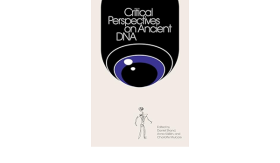21. Radin, Life on Ice; TallBear, Native American DNA.
22. Leena Cho, “Permafrost Politics: Toward a Relational Materiality and Design of Arctic Ground,” Landscape Research 46, no. 1 (2021): 26.
23. Cho, “Permafrost Politics,” 30.
24. Cho, “Permafrost Politics,” 30.
25. Michael Bravo, “A Cryopolitics to Reclaim Our Frozen Material States,” in Cryopolitics: Frozen Life in a Melting World, ed. Joanna Radin and Emma Kowal (Cambridge, MA: MIT Press, 2017), 35.
26. Bravo, “Cryopolitics to Reclaim Our Frozen Material States,” 35.
27. Ekaterina Ezhova et al., “Climatic Factors Influencing the Anthrax Outbreak of 2016 in Siberia, Russia,” EcoHealth 18, no. 2 (2021): 217–228; Elena A. Liskova et al., “Reindeer Anthrax in the Russian Arctic, 2016: Climatic Determinants of the Outbreak and Vaccination Effectiveness,” Frontiers in Veterinary Science 8 (2021): 1–9.
28. It should be noted, however, that this explanation has been challenged by some scientists. See Karsten Hueffer et al., “Factors Contributing to Anthrax Outbreaks in the Circumpolar North,” EcoHealth 17, no. 1 (2020): 174–180.
29. Michaeleen Doucleff, “Anthrax Outbreak in Russia Thought to Be Result of Thawing Permafrost,” National Public Radio, August 3, 2016, https://www.npr.org/sections/goatsandsoda/2016/08/03/488400947/anthrax-outbreak-in-russia-thought-to-be-result-of-thawing-permafrost.
30. “As Earth Warms, the Diseases That May Lie within Permafrost Become a Bigger Worry,” Scientific American, November 1, 2016, https://www.scientificamerican.com/article/as-earth-warms-the-diseases-that-may-lie-within-permafrost-become-a-bigger-worry/.
31. Thomas Nilsen, “Scientist: Yamal Anthrax Outbreak Could Just Be the Beginning,” Barents Observer, August 7, 2016, https://thebarentsobserver.com/en/arctic/2016/08/scientist-yamal-anthrax-outbreak-could-just-be-beginning.
32. Colleen Nguyen, “Anthrax Outbreak in Siberia as a Harbinger of the Unfreezing of Pathogens,” Disease Daily, August 16, 2016, http://www.diseasedaily.org/diseasedaily/article/anthrax-outbreak-siberia-harbinger-unfreezing-pathogens-81616.
33. Doucleff, “Anthrax Outbreak in Russia.”
34. Ben Guarino, “Anthrax Sickens 13 in Western Siberia, and a Thawed-Out Reindeer Corpse May Be to Blame,” Washington Post, July 28, 2016, https://www.washingtonpost.com/news/morning-mix/wp/2016/07/28/anthrax-sickens-13-in-western-siberia-and-a-thawed-out-reindeer-corpse-may-be-to-blame/.
35. Boris A. Revich and Marina A. Podolnaya, “Thawing of Permafrost May Disturb Historic Cattle Burial Grounds in East Siberia,” Global Health Action 4, no. 1 (2011): 1–6.
36. Revich and Podolnaya, “Thawing of Permafrost,” 1.
37. Revich and Podolnaya, “Thawing of Permafrost,” 1.
38. Elisa Stella et al., “Permafrost Dynamics and the Risk of Anthrax Transmission: A Modelling Study,” Nature Scientific Reports 10 (2020).
39. Hamilton, “Reindeer and Woolly Mammoths.”
40. See, for example, Vitalii Timofeev et al., “Insights from Bacillus anthracis Strains Isolated from Permafrost in the Tundra Zone of Russia,” PLoS ONE 14, no. 5 (2019).
41. Deutsche Welle, “Anthrax Outbreak Infects Nomads in Siberia,” August 2, 2016, https://www.dw.com/en/anthrax-outbreak-infects-nomads-in-siberia/a-19444460.
42. TallBear, Native American DNA.
43. Hamilton, “Reindeer and Woolly Mammoths.”
44. Nicolas Arning and Daniel J. Wilson, “The Past, Present and Future of Ancient Bacterial DNA,” Microbial Genomics 6, no. 7 (2020): 1–19; Sebastián Duchêne et al., “The Recovery, Interpretation and Use of Ancient Pathogen Genomes,” Current Biology 30, no. 19 (2020): 1215–1231; Venla Oikkonen, “Conceptualizing Histories.”
45. Timofeev et al., “Insights from Bacillus anthracis.”
46. Timofeev et al., “Insights from Bacillus anthracis,” 16.
47. Timofeev et al., “Insights from Bacillus anthracis,” 16.
48. Timofeev et al., “Insights from Bacillus anthracis,” 7.
49. See, for example, Douglas Jordan, Terrence Tumpey, and Barbara Jester, “The Deadliest Flu: The Complete Story of the Discovery and Reconstruction of the 1918 Pandemic Virus,” Centers for Disease Control and Prevention, January 26, 2023, https://archive.cdc.gov/#/details?q=Deadliest%20flu&start=0&rows=10&url=https://www.cdc.gov/flu/pandemic-resources/reconstruction-1918-virus.html.
50. For the history of research on the 1918 pandemic virus and its public reception, see, for example, George Dehner, Influenza: A Century of Science and Public Health Response (Pittsburgh: University of Pittsburgh Press, 2012); Jeffery K. Taubenberger, Johan V. Hultin, and David M. Morens, “Discovery and Characterization of the 1918 Pandemic Influenza Virus in Historical Context,” Antiviral Therapy 12, no. 4 (2007): 581–591; Jordan, Tumpey, and Jester, “Deadliest Flu.”
51. David Brown, “Resurrecting 1918 Flu Virus Took Many Turns,” Washington Post, October 10, 2005, https://www.washingtonpost.com/archive/politics/2005/10/10/resurrecting-1918-flu-virus-took-many-turns/5de7c762-74e1-45ab-9457-a52319decf86; Jocelyn Kaiser, “Resurrecting the ‘Spanish Flu,’ ” Science Magazine, October 5, 2005, https://www.sciencemag.org/news/2005/10/resurrecting-spanish-flu.
52. Jeffery K. Taubenberger et al., “Characterization of the 1918 Influenza Virus Polymerase Genes,” Nature 437, no. 7060 (2005): 889–893.
53. See Carlo Caduff, The Pandemic Perhaps: Dramatic Events in a Public Culture of Danger (Oakland: University of California Press, 2015).
54. Frédéric Keck, “Stockpiling as a Technique of Preparedness: Conserving the Past for an Unpredictable Future,” in Cryopolitics: Frozen Life in a Melting World, ed. Joanna Radin and Emma Kowal (Cambridge, MA: MIT Press, 2017), 118.
55. For reports of some of the experiments, see Terrence M. Tumpey et al. “Pathogenicity of Influenza Viruses with Genes from the 1918 Pandemic Virus: Functional Roles of Alveolar Macrophages and Neutrophils in Limiting Virus Replication and Mortality in Mice,” Journal of Virology 79, no. 23 (2005): 14933–14944; Claudia Pappas et al., “Single Gene Reassortants Identify a Critical Role for PB1, HA, and NA in the High Virulence of the 1918 Pandemic Influenza Virus,” Proceedings of the National Academy of Sciences 105, no. 8 (2008): 3064–3069.
56. Caduff, Pandemic Perhaps, 104–128.
57. Caduff, Pandemic Perhaps, 104–128.
58. Taubenberger, Hultin, and Morens, “Discovery and Characterization,” 9.
59. Andrew Carroll, “An Alaskan Village Holds the Key to Understanding the 1918 Spanish Flu,” HistoryNet, March 16, 2020, https://www.historynet.com/alaskan-village-holds-key-understanding-1918-spanish-flu.htm.
60. See, for example, Brown, “Resurrecting 1918 Flu Virus,” or Jordan, Tumpey, and Jester, “Deadliest Flu.”

























